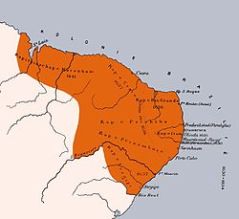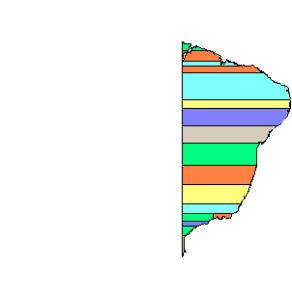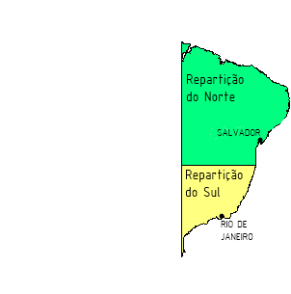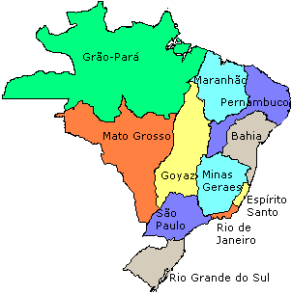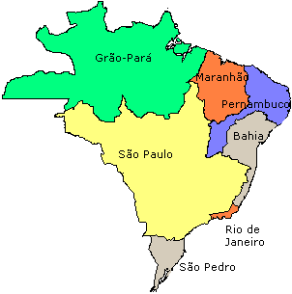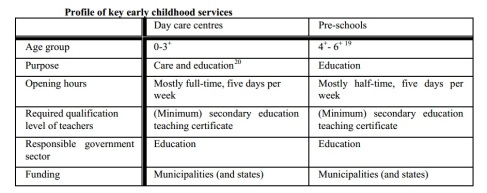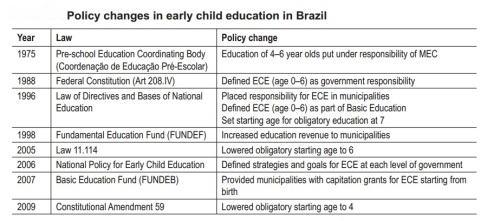by Paul Penkal

Picture courtesy of NASA
The rainforest in Brazil is arguably its strongest asset, and how Brazil manages this resource has far-reaching consequences worldwide. The Amazon Rainforest stretches over 60% of the northern part of the country. With rain reaching more than two meters annually, it’s ecosystem provides an abundance of natural resources. The Amazon is very important to Brazil’s economy and infrastructure, but it’s disappearing rapidly. The deforestation rate is so great that some experts believe that half of the Amazon will be gone by the year 2050. The main causes for its disappearance include shift cultivators, farmers clearing land and misguided government policies (born of economic constraints).
The forest affects weather patterns worldwide .
The Amazon rainforest provides a significant portion of all Earth’s oxygen while absorbing more carbon dioxide than any other region in the world.
Its 1.8 million square miles which are home to one third of all the animals in the world. This includes 1,700 bird species, 695 amphibians, 578 mammals, 651 reptile species, and 56,000 species of plants, 1,700 of which are trees. What one might not expect is almost none of these animals reside on the forest floor. The 1,700 species of trees make up the four distinct and very important layers to the rainforest. The first layer, starting from the top, is the emergent canopy. This layer is very sparse as it consists of only a few species of trees standing at up to 80 meters tall. These trees stick out above the rest of the rainforest, and are home to eagles, butterflies, bats, and monkeys. Bats were the first flying mammal in the rainforest. The next layer is the canopy, where all the action of the rainforest lies. These trees are roughly 30 meters tall. The canopy is the densest area of the rainforest, where 50% of all the species call home. Plants live and root in the tree branches. It is believed that a quarter of all insects in the world live here. Scientists are still baffled by the richness of this layer and have difficulties exploring it because of the height. The next layer that is found below the canopy is the understory. By this point only 5% of the sun’s rays make it through the other layers. This layer is home to many birds, snakes and larger predators such as leopards and jaguars. It is also dubbed the shrub layer due to the large amount of the world’s shrubs that reside in the understory. The final layer at the bottom is the forest floor. This area lays waste to all debris. It consists of decomposing plant material along with river banks, swamps and any plant adapted to low light conditions. By this point only 2% of the sun’s rays make it to this level.
The rainforest is home to many goods the average American takes for granted. These goods include coconuts, avocados, lemons, grapefruit, bananas, guavas, figs, oranges, pineapples, mangoes, tomatoes, corn, potatoes, rice, black pepper, cayenne pepper, chocolate, cinnamon, cloves, ginger, sugar cane, turmeric, coffee, vanilla nuts and cashew nuts. Incredibly, about 25% of the modern prescription drugs that come from plants actually hail from rainforest vegetation. These include drugs that tackle cancer, AIDS symptoms, viruses and infections (answers.yahoo.com). There is no questioning the importance of the rainforest. However, if deforestation continues at this rate, roughly 10,000 square miles a year, Brazil could be left rainforest free in the relatively near future.
One third of deforestation comes from shifting cultivation. This is when small sections of the forest are seeded with crops and then harvested and then left for regrowth. This is the largest reason for deforestation in the world. In Brazil, however, rainforest lands are primarily cleared to create pasturelands for raising beef cattle. Since the value of the real (the Brazilian currency) has dropped, the demand for exports has risen. Fundamental analysis takes into account everything that’s happening in the economy. For example in the United States interest rates, home construction and sales, and auto sales are factors in the fundamental analysis. When a currency devalues demand for exports increase. A consumer can now buy exported goods from a country in which the currency just dropped at a much lower price because the conversion rate is in their favor. When any demand goes up, the production goes up as well. Now farmers of Brazil have more freedom for what to harvest and sell because there is a market for it outside of Brazil. The world has an appetite for inexpensive Brazilian beef. Unfortunately, cattle need land for grazing and as a result more of the rainforest is harvested each year. To prepare the land for cattle grazing, poor farmers will take a section of rainforest and set fire to it. Over the next two years, the farmers plant crops that are in high demand for export. Once the soil is no longer fit for farming, the land is turned into a grazing area for cattle and the farmer moves to a new section. A squatter acquires rights to public land after only one year of using the land, and after five years that squatter then gains ownership and the right to sell. These are a few examples of some of the misguided policies that invite deforestation in the Amazon Rainforest. Other major reasons for deforestation include commercial agriculture, logging, forest fires, and flooding.
The whole world wonders whether this is a disappearing resource. Optimistically thinking, advancements in future agriculture means there might not be need to cut down any more forest. However, at the rate that deforestation is going now, half of the world’s rainforest will be depleted by the year 2050. Brazil is doing things to protect sections of the forest, and the country has a 10 year plan that is a movement to protect a 190,000 square mile section of the rainforest. To gain some perspective this section is 12.5% of all Brazil and is 25% of the Amazon Rainforest and is home to 450,000 Indians. If Brazil continues to take steps in the direction of rainforest depletion protection, there is still hope yet for the Amazon Rainforest.
How Brazil manages its rainforest has consequences for the entire world. Brazilian environmental policy is thus at the frontlines in addressing the crisis faced by the entire planet. This provides Brazil with a unique opportunity to take leadership and to demonstrate stewardship. Brazil is also burdened with an enormous responsibility, since the mismanagement of this resource has tremendously dire and far-reaching consequences.
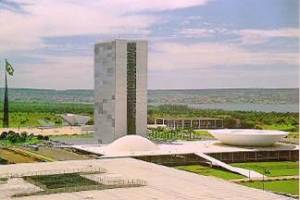
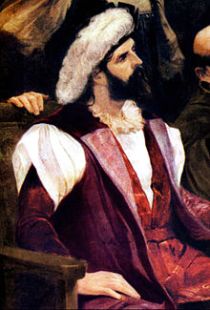
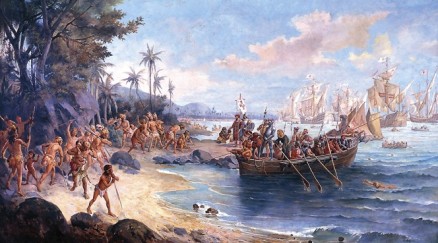 the colonization of Brazil due to their success at creating a national Catholic following. Brazil now had permanent Portuguese residents and an established unified government. They were ready to begin exporting goods and wealth back to the Portuguese Empire.
the colonization of Brazil due to their success at creating a national Catholic following. Brazil now had permanent Portuguese residents and an established unified government. They were ready to begin exporting goods and wealth back to the Portuguese Empire.